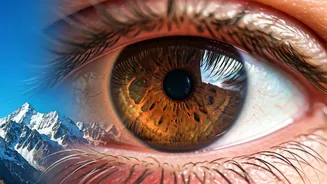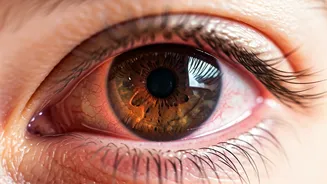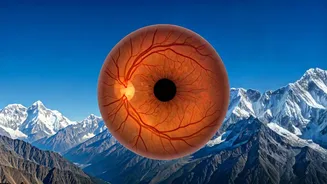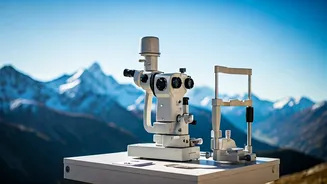Sudden Vision Loss
Sudden vision loss at high altitudes is a phenomenon that can significantly impact trekkers. This vision loss often stems from High Altitude Retinopathy
(HAR). HAR is a condition where the retina, the light-sensitive tissue at the back of the eye, experiences damage due to the reduced oxygen levels at high altitudes. This lack of oxygen can cause the blood vessels in the retina to leak or even bleed, leading to blurred or complete vision loss. While the exact mechanisms are complex, the primary culprit is the physiological stress placed on the eyes by the thin air and increased exposure to ultraviolet radiation at higher elevations.
How Common Is It?
High Altitude Retinopathy (HAR) isn't exceedingly common, but it's a genuine concern for trekkers. The exact prevalence varies, but studies suggest that it is more likely at altitudes exceeding 15,000 feet. The incidence of HAR can vary depending on factors like the duration of exposure, the speed of ascent, and individual susceptibility. While some individuals may experience mild symptoms, others might face severe vision problems. It is crucial to be aware that HAR is a potential risk to anyone planning on trekking to high-altitude areas, especially those involving rapid ascents and extended time spent at significant heights.
Who's Most Vulnerable?
Certain factors increase a trekker’s risk of developing High Altitude Retinopathy (HAR). Individuals with pre-existing conditions affecting blood vessels are at higher risk. Those with high blood pressure or diabetes might be more susceptible to HAR due to the existing stress on their circulatory system. Another significant factor is the rate of ascent; rapidly ascending to high altitudes without allowing the body to acclimatize increases the chances of HAR. Moreover, genetics and individual responses to altitude play a role. Ultimately, a combination of these elements determines how vulnerable a trekker is to this condition.
Early Warning Signs
Early detection of High Altitude Retinopathy (HAR) is critical. Trekkers need to be vigilant about recognizing potential warning signs. Symptoms to watch for include blurred vision, which may start subtly. The development of spots or floaters in the field of vision is also another indicator that something might be wrong. Headaches, which can often be associated with altitude sickness, might accompany these visual changes. Any eye pain or discomfort, especially in bright sunlight, is a significant symptom. Prompt recognition of these signs should prompt immediate action, including descending to a lower altitude to prevent further damage.
Protecting Your Eyes
Protecting your eyes during high-altitude trekking is crucial for preventing High Altitude Retinopathy (HAR). Before setting out, it is important to undergo a thorough eye examination. Make sure to wear UV-protective sunglasses to shield eyes from the increased UV radiation at high altitudes. The use of goggles, especially in snowy conditions, is also advised as snow can reflect a lot of UV rays. Controlled ascent is another important step, as slow acclimatization significantly reduces the risk. Finally, trekkers must stay hydrated and avoid strenuous activities at extreme heights to minimize stress on the body and eyes.














